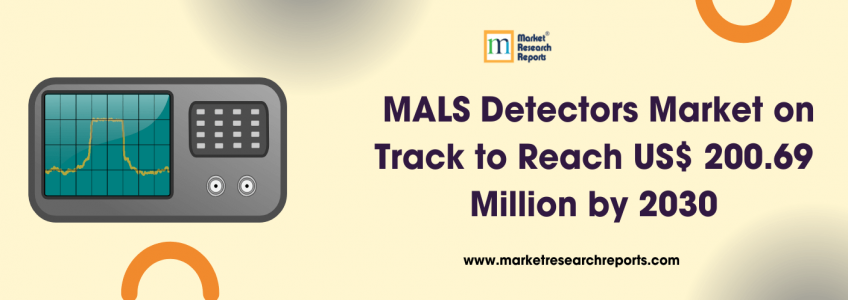MALS Detectors Market on Track to Reach US$ 200.69 Million by 2030

Table of Contents
In the realm of analytical chemistry and biophysics, the quest for precise molecular characterization is unending. Scientists and researchers continually seek innovative tools to unravel the complexities of biomolecules, polymers, and nanoparticles. Among the array of techniques available, Multi-Angle Light Scattering (MALS) emerges as a beacon of illumination, offering invaluable insights into molecular structures and interactions. This essay delves into the industry perspective on MALS, exploring its applications, advancements, and impact.
1 . Applications
MALS finds extensive utility across diverse industries, ranging from pharmaceuticals and biotechnology to materials science and environmental monitoring. In drug development, MALS plays a pivotal role in elucidating the size, shape, and aggregation state of proteins and nucleic acids, aiding in formulation optimization and biotherapeutic stability assessment. In polymer science, MALS facilitates the characterization of molecular weight distribution, branching, and conformation, guiding the design of novel materials with tailored properties. Additionally, MALS serves as a valuable tool in the analysis of colloidal systems, nanoparticles, and macromolecular complexes, shedding light on their structure-function relationships.
Application of MALS in Analyzing Protein Aggregation in Biopharmaceuticals

2 . Advancements
The evolution of MALS instrumentation has been marked by significant advancements, enhancing its resolution, sensitivity, and versatility. Modern MALS systems integrate with size exclusion chromatography (SEC-MALS), high-performance liquid chromatography (HPLC-MALS), and field-flow fractionation (FFF-MALS), enabling comprehensive characterization of complex samples. Furthermore, the integration of MALS with complementary techniques such as dynamic light scattering (DLS) and differential scanning calorimetry (DSC) allows for a holistic understanding of molecular behavior under varying conditions. Recent developments in data analysis algorithms and software have also streamlined MALS data interpretation, empowering researchers to extract actionable insights with greater efficiency and accuracy.
3 . Impact
The impact of MALS extends far beyond the confines of research laboratories, permeating into industrial processes and product development pipelines. In the pharmaceutical industry, MALS facilitates the characterization of protein aggregates, a critical parameter in ensuring the safety and efficacy of biopharmaceuticals. By enabling precise determination of nanoparticle size and morphology, MALS contributes to the advancement of drug delivery systems and nanomedicine. In materials science, MALS-driven insights guide the optimization of polymer formulations for diverse applications, from packaging materials to biomaterials. Moreover, MALS plays a vital role in environmental monitoring efforts, aiding in the detection and characterization of particulate pollutants and microplastics in air and water samples.
4 . Global Market Forecast
The forecast for the global Multi-Angle Light Scattering (MALS) Detectors market paints a picture of substantial growth and expansion over the forecast period from 2024 to 2030. Starting from a value of US$ 101.27 million in 2023, the market is anticipated to nearly double in size, reaching US$ 200.69 million by 2030. This trajectory indicates a robust compound annual growth rate (CAGR) of 10.56%, highlighting the increasing demand and adoption of MALS detectors across various industries.
Breaking down the regional outlook, the North American market for MALS detectors is poised for significant growth, with an estimated increase from US$ 48.34 million in 2023 to a projected value of US$ 95.31 million by 2030. This translates to a commendable CAGR of 10.45%, reflecting the strong market presence and adoption rates in the region.
Similarly, the Asia-Pacific market for MALS detectors is projected to experience substantial growth, with estimated revenues climbing from US$ 23.63 million in 2023 to US$ 51.04 million by 2030. This represents an impressive CAGR of 11.91%, underscoring the rising demand for advanced analytical instrumentation in emerging economies and the expanding biopharmaceutical and materials science sectors in the region.
The forecast also sheds light on the competitive landscape of the MALS detectors market, dominated by key global manufacturers such as Wyatt Technology, Malvern Panalytical, Tosoh Bioscience, and others. In 2023, the top three vendors collectively accounted for approximately 79.34% of the market revenue, highlighting their significant market share and influence.





